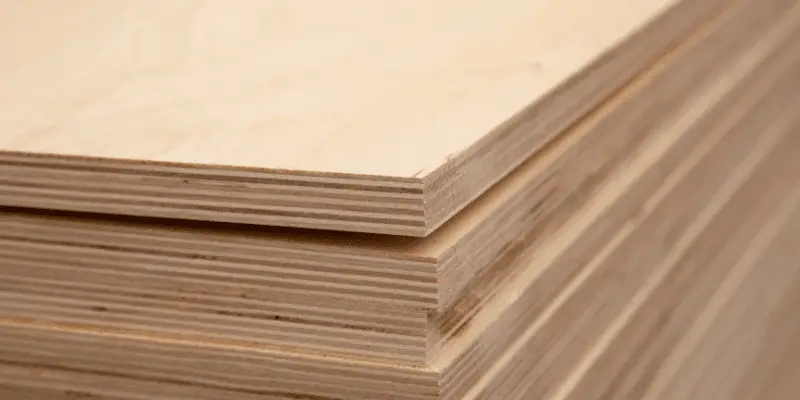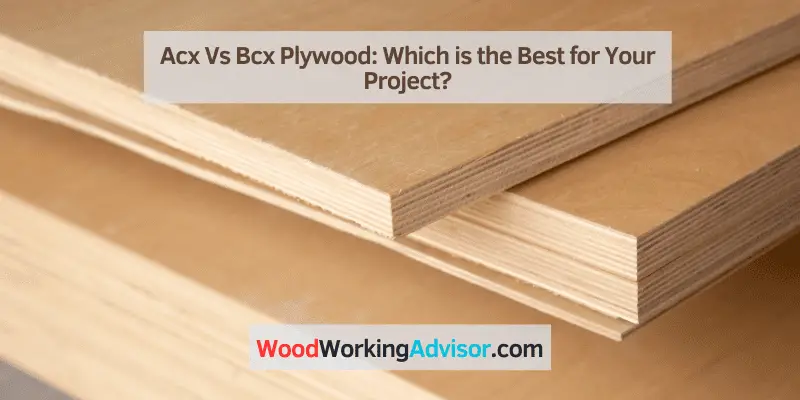ACX and BCX plywood are both types of exterior plywood, with ACX being sanded on both sides and BCX being sanded on one side only. They are both commonly used in construction for various projects, but they have different surface finishes that can affect their appearance and functionality.
Choosing the right type of plywood is crucial for any construction or woodworking project. The decision between ACX and BCX plywood may depend on the specific requirements of the project, such as the desired surface finish, cost, and intended application.
Understanding the differences between ACX and BCX plywood will help you make an informed decision and ensure the best results for your project. We will explore the characteristics of ACX and BCX plywood, their uses, and the factors to consider when choosing between them.
Understanding Plywood Grading
When choosing between ACX and BCX plywood, understanding the grading system is crucial. ACX plywood is high-quality with a smooth finish on both sides, while BCX has one smooth side and one rough side. Both types have different applications based on their appearance and strength, so it’s important to select the right one for your project.
When it comes to choosing the right plywood for your project, it’s crucial to understand the grading system in order to make an informed decision. Plywood grading distinguishes the quality and appearance of the wood, helping consumers select the most suitable option for their specific needs. Two common grading systems are ACX and BCX, each possessing unique characteristics that cater to different requirements.
Acx Plywood
ACX plywood is commonly used in construction and offers superior quality suitable for exterior applications. The grading denotes the two “A” grade faces and the “C” grade back, indicating that both sides of the plywood are smooth and free from defects. This high-quality plywood is perfect for projects that require a clean, finished appearance.
Bcx Plywood
On the other hand, BCX plywood consists of one B-grade face, one C-grade face, and a smooth, ungraded back. While BCX plywood may have a more rustic appearance due to the visible wood grain and occasional knots or patches, it is a cost-effective option for interior projects that do not require a pristine finish.
Quality and Appearance
The quality and appearance of plywood are essential factors that impact its suitability for various applications. Consider the following characteristics when choosing between ACX and BCX plywood:
ACX Plywood:BCX Plywood:
– Grades: One B-grade face, one C-grade face, and a smooth back
– Appearance: Visible wood grain, occasional knots or patches
– Best Suited For: Interior projects, subflooring, sheathing
Understanding the differences in plywood grading, particularly between ACX and BCX, allows consumers to make informed decisions based on the specific needs of their projects. Whether prioritizing a clean, professional finish or seeking a more cost-effective option with a rustic aesthetic, the choice between ACX and BCX plywood ultimately depends on the desired outcome and functionality.
Characteristics Of Acx Plywood
When it comes to choosing the right plywood for your project, understanding the characteristics of ACX plywood can help you make an informed decision. ACX plywood is known for its high quality and versatility, making it a popular choice among builders and DIY enthusiasts alike.
Definition And Composition
ACX plywood, also known as ‘A’ grade plywood, is a type of plywood that has a high-quality surface finish on both the front and back, making it suitable for visible applications. The ‘A’ grade signifies that the face and back veneers are of high quality, while the ‘C’ grade indicates that the inner core veneers may have some defects.
Strengths And Limitations
One of the key strengths of ACX plywood is its high level of durability and stability, making it suitable for a wide range of structural applications. It is also easy to work with, allowing for clean cuts and smooth finishes. However, it is important to be mindful of the limitations of ACX plywood, as it may not be as cost-effective as lower grade plywood options, and may not be suitable for all projects that require a lower grade of plywood.
Characteristics Of Bcx Plywood
BCX plywood is a popular choice for a variety of construction and woodworking projects. Understanding its characteristics can help you determine if it’s the right material for your next endeavor.
Definition And Composition
BCX plywood is a type of softwood plywood that is graded with a letter designation to signify the quality of its surfaces. The ‘B’ side, which is the face, is of a higher quality and is typically free of knots, while the ‘C’ side, also known as the back, may have visible defects such as knots and voids. The ‘X’ indicates that the wood exterior is suitable for exterior use.
Strengths And Limitations
BCX plywood offers several strengths, such as its versatility for both interior and exterior applications. Its smooth and uniform surface makes it ideal for finishes, and its ability to withstand moisture and weather makes it a reliable choice for outdoor projects. However, BCX plywood is not without limitations, as the ‘C’ side may have visible imperfections that can affect its aesthetic appeal. Moreover, it may not be as strong as other types of plywood, making it less suitable for heavy-duty structural applications.

Selecting The Right Plywood For Your Project
Choosing the right plywood for your project is crucial to achieving the desired outcome. Two popular choices are ACX and BCX plywood, each with its own unique qualities and suitable applications. Understanding the differences between them can help you make an informed decision.
Application Considerations
When deciding between ACX and BCX plywood, the intended application is a primary consideration. ACX plywood, with its smooth and sanded face, is ideal for projects that require a finished appearance, such as cabinets, furniture, and interior projects. On the other hand, BCX plywood is an excellent choice for exterior applications, like roofing, sheathing, and subflooring, due to its textured surface and durability.
Cost And Availability
Considering the cost and availability of plywood is essential when choosing the right option for your project. ACX plywood, being more refined and suited for aesthetic projects, tends to be more expensive and may have limited availability in certain areas. Conversely, BCX plywood is generally more cost-effective and readily available, making it a practical choice for larger-scale construction and outdoor projects.
Comparison Of Acx And Bcx Plywood
When it comes to choosing the right plywood for your project, understanding the differences between ACX and BCX plywood is crucial. Both of these types of plywood have their own unique attributes that make them suitable for various applications. This comparison will help you make an informed decision based on your specific needs.
Strength And Durability
ACX plywood is known for its high strength and durability. The A-grade side of ACX plywood has a smooth surface and is ideal for applications where appearance and strength are essential, such as furniture and cabinets. The C-grade side, on the other hand, may have some knots and imperfections but still offers good structural integrity. This makes ACX plywood a versatile option for both aesthetic and structural purposes.
BCX plywood, on the other hand, is slightly different in terms of strength and durability. It features a B-grade face with fewer knots and imperfections, making it suitable for applications where appearance matters but structural strength may be less critical. The C-grade backside of BCX plywood, while not as smooth as the ACX C-grade, still offers good structural support for various uses.
Finish And Aesthetics
ACX plywood is preferred for projects where the appearance of the wood is important, as it offers a smoother and more visually appealing surface. This makes it suitable for applications where the plywood will be visible, such as paneling and furniture making. The BCX plywood, with its B-grade face, also offers a good appearance but may contain more knots and imperfections compared to ACX plywood. While it is not as visually refined, it still provides a pleasing aesthetic for certain projects where appearance is a factor.
Frequently Asked Questions Of Acx Vs Bcx Plywood
What Are The Key Differences Between Acx And Bcx Plywood?
ACX plywood is sanded on both sides and has a smoother finish, whereas BCX plywood is sanded on one side and has a rougher appearance. ACX is often used for visible applications, while BCX is commonly used for structural purposes.
Which Plywood Type Is More Suitable For Outdoor Projects?
ACX plywood is more suitable for outdoor projects due to its smoother finish and higher resistance to moisture and weathering. It is commonly used for applications such as exterior sheathing, roofing, and fencing.
What Are The Advantages Of Using Bcx Plywood Over Acx Plywood?
BCX plywood is typically more cost-effective than ACX plywood, making it a suitable option for budget-conscious projects. It is also commonly used for structural applications where appearance is less important, such as sheathing and subflooring.
Conclusion
Both ACX and BCX plywood have their unique benefits and applications. It is crucial to consider your specific project needs and budget when choosing the right type of plywood. By understanding the differences between ACX and BCX, you can make an informed decision and achieve the best results for your woodworking projects.


